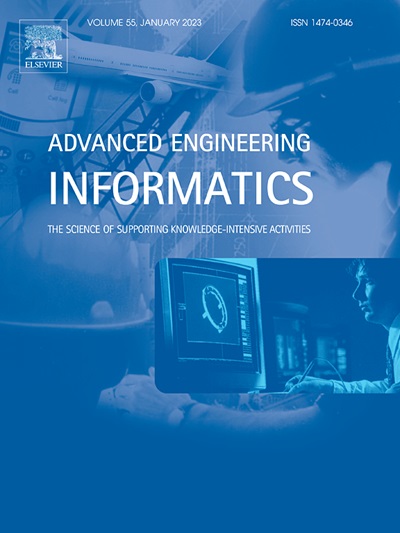Collaborative scheduling of handling equipment in automated container terminals with limited AGV-mates considering energy consumption
IF 8
1区 工程技术
Q1 COMPUTER SCIENCE, ARTIFICIAL INTELLIGENCE
引用次数: 0
Abstract
AGV-mates (automated guided vehicle, AGV) are a type of buffering equipment installed in the seaside area of the yard block, which can decouple AGV and yard crane operations. In recent years, an AGV charging function has been integrated in AGV-mates, providing AGVs with an alternative charging method besides battery recovery at the battery swapping station. This has resulted in time constraints and additional energy replenishment decisions in collaborative scheduling optimization, complicating the terminal equipment scheduling problem. Therefore, this paper investigates the collaborative scheduling problem of yard equipment in each operation stage of an automated container terminal, proposes charging-swapping mode for AGV energy replenishment, and develops a mixed integer programming model to minimize equipment no-load energy consumption and operational delay costs. In order to address the difficulty of solving large-scale cases, a solution method based on the variable neighborhood search algorithm is developed. Considering the decoupling and charging characteristics of AGV-mates, local search operators for the AGVs’ task sequence, the yard crane’s task sequence, and the AGV battery swapping task nodes are designed. Finally, the efficiency and effectiveness of proposed solution and operators are verified through a series of numerical experiments. This paper presents practical equipment scheduling solutions and management strategies, compared to a single charging or swapping mode, the charging-swapping mode proposed in this paper has a significant improvement in the no-load cost and the delay cost.
求助全文
约1分钟内获得全文
求助全文
来源期刊

Advanced Engineering Informatics
工程技术-工程:综合
CiteScore
12.40
自引率
18.20%
发文量
292
审稿时长
45 days
期刊介绍:
Advanced Engineering Informatics is an international Journal that solicits research papers with an emphasis on 'knowledge' and 'engineering applications'. The Journal seeks original papers that report progress in applying methods of engineering informatics. These papers should have engineering relevance and help provide a scientific base for more reliable, spontaneous, and creative engineering decision-making. Additionally, papers should demonstrate the science of supporting knowledge-intensive engineering tasks and validate the generality, power, and scalability of new methods through rigorous evaluation, preferably both qualitatively and quantitatively. Abstracting and indexing for Advanced Engineering Informatics include Science Citation Index Expanded, Scopus and INSPEC.
 求助内容:
求助内容: 应助结果提醒方式:
应助结果提醒方式:


